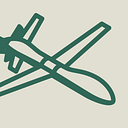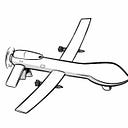Test Pilot Admits the F-35 Can’t Dogfight
New stealth fighter is dead meat in an air battle
by DAVID AXE
A test pilot has some very, very bad news about the F-35 Joint Strike Fighter. The pricey new stealth jet can’t turn or climb fast enough to hit an enemy plane during a dogfight or to dodge the enemy’s own gunfire, the pilot reported following a day of mock air battles back in January.
“The F-35 was at a distinct energy disadvantage,” the unnamed pilot wrote in a scathing five-page brief that War Is Boring has obtained. The brief is unclassified but is labeled “for official use only.”
The test pilot’s report is the latest evidence of fundamental problems with the design of the F-35 — which, at a total program cost of more than a trillion dollars, is history’s most expensive weapon.
The U.S. Air Force, Navy and Marine Corps — not to mention the air forces and navies of more than a dozen U.S. allies — are counting on the Lockheed Martin-made JSF to replace many if not most of their current fighter jets.
And that means that, within a few decades, American and allied aviators will fly into battle in an inferior fighter — one that could get them killed … and cost the United States control of the air.
The fateful test took place on Jan. 14, 2015, apparently within the Sea Test Range over the Pacific Ocean near Edwards Air Force Base in California. The single-seat F-35A with the designation “AF-02” — one of the older JSFs in the Air Force — took off alongside a two-seat F-16D Block 40, one of the types of planes the F-35 is supposed to replace.
The two jets would be playing the roles of opposing fighters in a pretend air battle, which the Air Force organized specifically to test out the F-35’s prowess as a close-range dogfighter in an air-to-air tangle involving high “angles of attack,” or AoA, and “aggressive stick/pedal inputs.”
In other words, the F-35 pilot would fly his jet hard, turning and maneuvering in order to “shoot down” the F-16, whose pilot would be doing his own best to evade and kill the F-35.
“The evaluation focused on the overall effectiveness of the aircraft in performing various specified maneuvers in a dynamic environment,” the F-35 tester wrote. “This consisted of traditional Basic Fighter Maneuvers in offensive, defensive and neutral setups at altitudes ranging from 10,000 to 30,000 feet.”
The F-35 was flying “clean,” with no weapons in its bomb bay or under its wings and fuselage. The F-16, by contrast, was hauling two bulky underwing drop tanks, putting the older jet at an aerodynamic disadvantage.
But the JSF’s advantage didn’t actually help in the end. The stealth fighter proved too sluggish to reliably defeat the F-16, even with the F-16 lugging extra fuel tanks. “Even with the limited F-16 target configuration, the F-35A remained at a distinct energy disadvantage for every engagement,” the pilot reported.
The defeated flier’s five-page report is a damning litany of aerodynamic complaints targeting the cumbersome JSF.
“Insufficient pitch rate.” “Energy deficit to the bandit would increase over time.” “The flying qualities in the blended region (20–26 degrees AoA) were not intuitive or favorable.”
The F-35 jockey tried to target the F-16 with the stealth jet’s 25-millimeter cannon, but the smaller F-16 easily dodged. “Instead of catching the bandit off-guard by rapidly pull aft to achieve lead, the nose rate was slow, allowing him to easily time his jink prior to a gun solution,” the JSF pilot complained.
And when the pilot of the F-16 turned the tables on the F-35, maneuvering to put the stealth plane in his own gunsight, the JSF jockey found he couldn’t maneuver out of the way, owing to a “lack of nose rate.
The F-35 pilot came right out and said it — if you’re flying a JSF, there’s no point in trying to get into a sustained, close turning battle with another fighter. “There were not compelling reasons to fight in this region.” God help you if the enemy surprises you and you have no choice but to turn.
The JSF tester found just one way to win a short-range air-to-air engagement — by performing a very specific maneuver. “Once established at high AoA, a prolonged full rudder input generated a fast enough yaw rate to create excessive heading crossing angles with opportunities to point for missile shots.”
But there’s a problem — this sliding maneuver bleeds energy fast. “The technique required a commitment to lose energy and was a temporary opportunity prior to needing to regain energy … and ultimately end up defensive again.” In other words, having tried the trick once, an F-35 pilot is out of options and needs to get away quick.
And to add insult to injury, the JSF flier discovered he couldn’t even comfortably move his head inside the radar-evading jet’s cramped cockpit. “The helmet was too large for the space inside the canopy to adequately see behind the aircraft.” That allowed the F-16 to sneak up on him.
In the end, the F-35 — the only new fighter jet that America and most of its allies are developing — is demonstrably inferior in a dogfight with the F-16, which the U.S. Air Force first acquired in the late 1970s.
The test pilot explained that he has also flown 1980s-vintage F-15E fighter-bombers and found the F-35 to be “substantially inferior” to the older plane when it comes to managing energy in a close battle.

